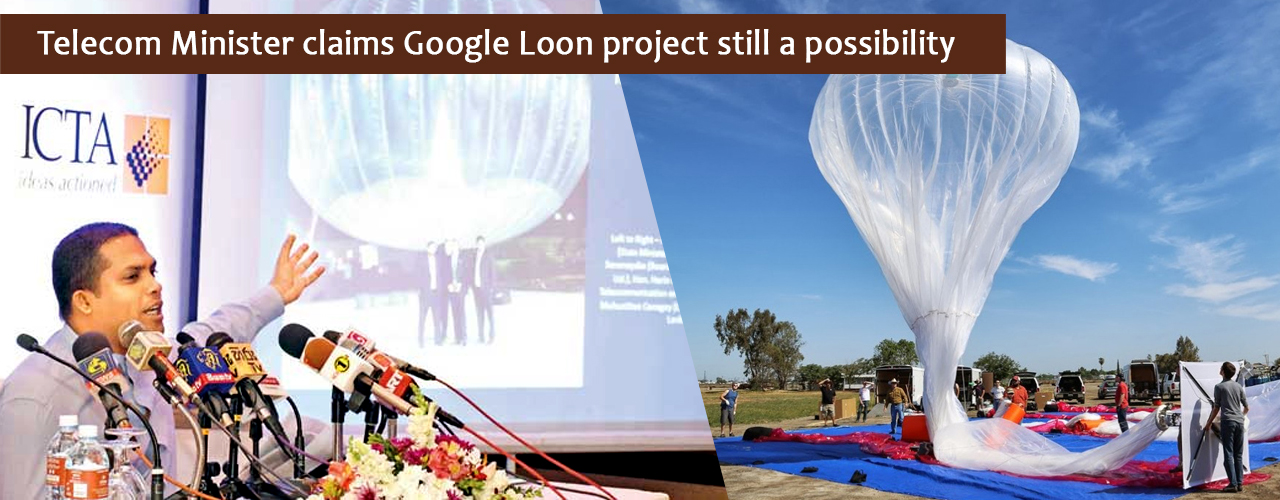Telecom Minister claims Google Loon project still a possibility
Minister of Telecommunication and Digital Infrastructure Harin Fernando is expected to re-negotiate with the International Telecommunication Union (ITU) to secure permission to employ the frequency band needed to implement the Google Loon project.
“The ITU has some concerns. Google was a bit worried that it was taking time but right now for the same band, I think Malta apparently has got the approval. So, I’m supposed to go to the ITU and again make a submission, that the same band has got it, so why can’t we have the approval? If the ITU gives the approval, Sri Lanka will have to reapply for Google Loon—a project which aims to beam down wireless Internet from high altitude balloons hovering over key locations of the country,” the Minister said.
Fernando claimed to be clueless as to why the ITU had declined to assign the required 700MHz spectrum frequency band for Google Loon.
In 2015 a Silicon Valley Big-wig, Chamath Palihapitiya of Rama Corporation suggested to President Maithripala Sirisena that the Government of Sri Lanka (GoSL) pitch for the Google Loon project.Subsequently, Palihapitiya’s motives have been questioned and he was subject to media ridicule over the many delays to the project, which culminated in him lambasting the media.
Palihapitiya’s calculations had indicated that the initiative would have boosted Sri Lanka’s GDP by 1.2% for every 10% of the country’s 21 million plus population that obtainedconnectivity to the internet via Google Loon.
In order to further its objective of establishing a digital economy, the GoSL intended to initiate this project in the hopes that it would provide internet access to households, mainly in rural districts that were yet to receive connectivity.
With this aim in mind, the GoSL together with the Rama Corporation and local telecommunication service providers formed a joint venture (JV) company to provide services via Google Loon.
In turn Google conducted balloon test flights above the country, developed business models and formulated a number of phases to implement the project. These preliminary activities did not cost the GoSL anything at all.
Confusion remains as to why the project faced several delays with the GoSL holds the ITU accountable and the ITU accusing the GoSL for not having accurately conveyed the project requirement.
OSL TAKE:
If as Fernando states the Google Loon project were to be revived, it would then provide numerous opportunities for IT companies and other telecommunication service providers to initiate businesses in Sri Lanka.
| Article Code : | VBS/AT/20092017/Z_9 |

